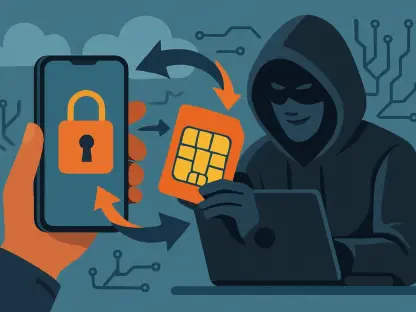As we increasingly rely on smartphones for daily tasks and critical needs, the necessity of ensuring that these devices remain secure cannot be overemphasized. Smartphones function as modern equivalents of Swiss Army Knives, providing numerous features that assist us in our everyday lives. However, leaving Wi-Fi enabled constantly presents significant security risks that many users might not be fully aware of. This pervasive oversight can lead to the exposure of personal data and unintentional location tracking, posing severe privacy concerns. Addressing these concerns, one productive measure is to manually disable Wi-Fi when not needed. This, along with effective management of location settings, can significantly enhance smartphone security.
Risks of Constant Wi-Fi Connectivity
Unseen Dangers of Automatic Network Connections
When your smartphone’s Wi-Fi is left on, it consistently scans and attempts to connect to known networks, including those that might not be secure. This continuous scanning means that your device is potentially interacting with a variety of open networks, some of which could be malicious. By automatically connecting to less secure or unverified networks, a smartphone may inadvertently expose sensitive information or allow malicious actors to access personal data. For example, hackers can create fake Wi-Fi hotspots, sometimes referred to as ‘rogue’ or ‘evil twin’ networks. If your phone connects to such a network, cybercriminals can intercept your communications and data transfers, leading to identity theft or financial loss.
Disabling Wi-Fi when you are not at home or using trusted networks can mitigate these risks by reducing the chances your device will connect to a harmful network. Besides, it helps avoid the unnecessary broadcasting of your device’s presence, thereby minimizing the trackable footprints that can be exploited to ascertain your location or daily habits. Ensuring Wi-Fi is off when not required can significantly enhance your smartphone’s security posture and overall privacy.
Revealing Habits Through Remembered Networks
Many people overlook the fact that smartphones compile a list of remembered Wi-Fi networks, logging where one’s device has connected over time. This buildup of remembered networks can easily expose patterns of movement and habitual locations. For instance, regularly visited places such as coffee shops, workplaces, and friends’ houses, if logged by the phone, can suggest detailed insights into a person’s routine and lifestyle preferences. This data, should it fall into the wrong hands, could be used to predict and exploit user behavior.
It is advisable to periodically clear out these saved networks, ensuring your device does not remember every network it has previously connected to, thereby reducing the risk of privacy invasion. By manually connecting to Wi-Fi networks only when necessary, users not only gain control over which networks their devices connect to but also actively diminish potential data trails that could reveal their habits and whereabouts. Simply put, maintaining a smaller list of remembered networks is an effective approach to protect one’s location data from exploitation.
The Complexities of Location Tracking
Beyond Wi-Fi: The Role of Bluetooth
Even if Wi-Fi is disabled, some smartphones, particularly Android devices, might still engage in location tracking through other connectivity features such as Bluetooth. Bluetooth technology can be leveraged for location-based services and tracking, often unbeknownst to the user. Retailers, advertisers, and other entities may utilize Bluetooth beacons to detect the presence of devices with active Bluetooth, facilitating targeted marketing or location analytics. This type of tracking can occur discreetly, collecting data about users’ movements and preferences without explicit permission.
To circumvent this, it is crucial to review and actively manage your device settings, especially concerning Bluetooth and location-based services. Users should frequently check which applications have access to their location data and limit this access to only those apps that genuinely require it for functionality. By taking these steps, one can better control how their smartphone’s connectivity features are used, thus enhancing personal security and privacy.
Restricting App Permissions and Data Access
Applications often request permissions that go beyond their necessary operational scope, including access to location data. These permissions can be broad or vaguely justified, which can lead to unnecessary data collection and sharing. Therefore, reviewing app permissions is a vital step towards securing one’s personal information. On most devices, it is possible to set location access permissions to ‘Only while using the app’, ‘Ask every time’, or to block it altogether if it’s not essential for the app’s function.
Proactively managing these permissions ensures that only applications with legitimate reasons have access to such sensitive information. Users should regularly audit the permissions granted to ensure they remain appropriate and revoke any that seem excessive or outdated. By exercising control over app permissions, one can significantly reduce the risk of inadvertent data exposure and enhance their device’s security.
Practical Measures for Improved Security
Leveraging Mobile Data and Cautious Connectivity
Given the security risks associated with constant Wi-Fi connectivity, relying more on mobile data where possible is a prudent alternative. Mobile data connections are generally more secure and less susceptible to interception by hackers. Using mobile data for activities like emailing, messaging, or listening to pre-downloaded music can diminish the necessity for frequent Wi-Fi connectivity, thereby minimizing exposure to unsafe networks.
However, this does not mean Wi-Fi should be avoided entirely; instead, users should adopt a more discerning approach to Wi-Fi connectivity. Connecting to trusted networks or those you control—like your home or workplace network—ensures a higher level of security. For public networks, using VPNs (Virtual Private Networks) can provide an additional layer of encryption, safeguarding data transfers even on unsecured networks.
Evaluating the Need for Continuous Connectivity
As we depend more on smartphones for our daily tasks and essential needs, ensuring the security of these devices is crucial. Smartphones today are like modern Swiss Army Knives, offering a multitude of features that aid us in our daily activities. However, constantly keeping Wi-Fi enabled presents major security risks that users may not fully understand. This common oversight can lead to personal data exposure and involuntary location tracking, raising serious privacy issues. To address these concerns, one effective strategy is to manually disable Wi-Fi when it’s not needed. Coupled with proper management of location settings, this can greatly enhance the security of your smartphone. By taking these precautions, users can protect their sensitive information and maintain better control over their privacy. Simple measures like these are essential in a world where our smartphones hold more and more of our personal and professional lives.









